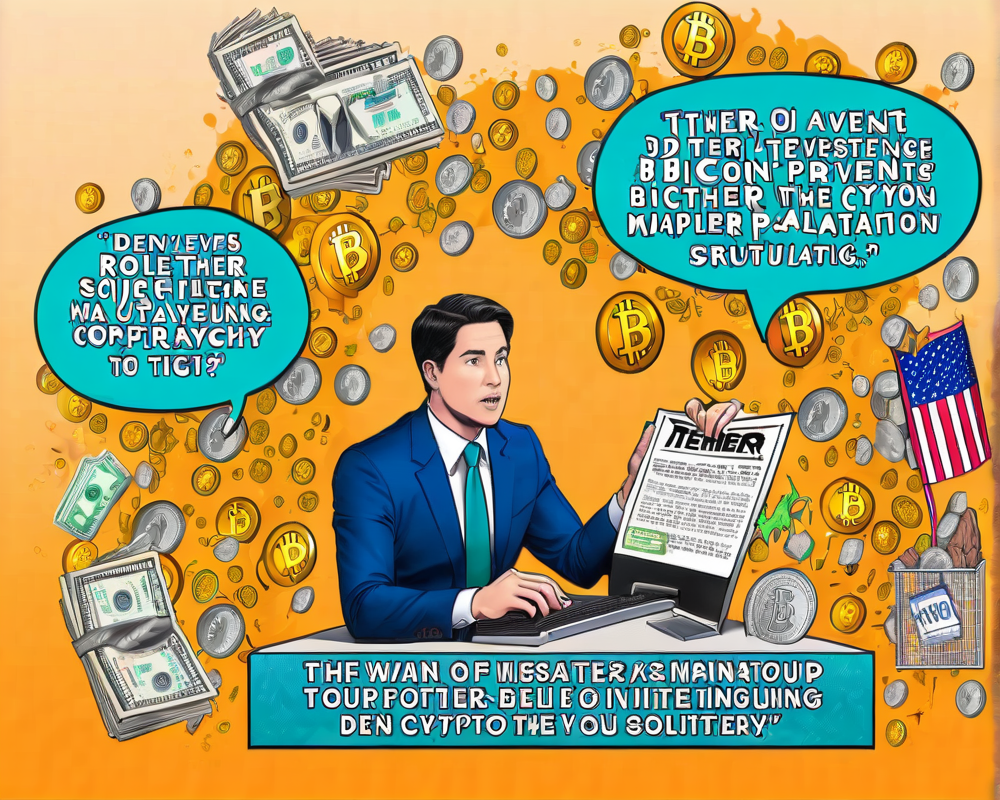Potential Price Manipulation Under the Microscope
The U.S. Department of Justice (DoJ) is brewing a storm in the crypto teacup, focusing on whether Tether (USDT) played a hand in inflating Bitcoin (BTC) prices during last year’s soaring rally. According to an intriguing report from Bloomberg, sources familiar with the matter are suggesting that Tether’s relationship with Bitcoin and the exchange Bitfinex is under the spotlight.
What’s the Deal with Tether and Bitfinex?
So, what’s the fuss all about? Essentially, Tether, Bitfinex, and Bitcoin are caught in a dramatic love triangle, and not the kind you see in a soap opera. Jan Ludovicus van der Velde, the CEO of both Tether and Bitfinex, is at the heart of these allegations. The DoJ is reportedly probing how Tether issues its tokens and why a whopping majority of them make their grand entrance into the market through Bitfinex.
The Question of Market Manipulation
As part of a broader investigation into potential “market tricks” that could have artificially inflated crypto prices over recent years, these developments raise eyebrows. Is there method behind the madness, or are we just watching a poorly scripted thriller unfold?
Previous Investigations: A Longer Trail of Suspicion
Let’s rewind a bit. Back in May, the DoJ and U.S. Commodity Futures Trading Commission (CFTC) decided to join forces for a criminal probe into possible price manipulation surrounding Bitcoin and Ethereum (ETH). Gotham might be gearing up for a new caped crusader, but the crypto market is left wondering who the true villains are. The DoJ’s latest investigation isn’t entirely focused merely on Bitfinex, and that keeps the suspense alive. Will the exchange’s executives find themselves in the hot seat next?
Criticism and Controversies Surrounding Tether
For those keeping score at home, Tether has been like that kid in class who never seems to do their homework but always gets away with it. Since December 2017, Bitfinex and Tether have received subpoenas from U.S. regulators, raising doubts about their claims that USDT is perfectly backed by the U.S. dollar.
“A scrappy kid with a knack for dodging rules always raises suspicion.”
The cloak-and-dagger drama heated up this January when Tether’s decision to cut ties with their third-party auditor had critics crying foul. They later released an unofficial audit in June, but isn’t that like taking your report card to lunch with friends? Depends on how trustworthy those friends are.
The Griffin Paper and Its Fallout
Adding more fuel to the fire, an academic paper co-authored by University of Texas professor John M. Griffin claimed that Tether purchases seem to be timed to follow market drops, often leading to significant spikes in Bitcoin prices. Talk about a power play! As if that wasn’t enough, insiders suggest Griffin may have briefed the CFTC about his shocking findings earlier this year. Spoiler alert: He’s not talking to reporters, so good luck getting comments from him!
Bitfinex: Rumors and Resilience
This autumn has not been kinder to Bitfinex, which has faced rumors of insolvency and alleged banking woes, both of which the exchange stridently denies. What’s more intriguing is that Tether recently redeemed and destroyed a whopping 500 million USDT. Some critics have jumped on this as evidence of market manipulation, suggesting that the company could exploit the situation to liquidate after a market rebound.
In conclusion, the soap opera of crypto manipulation transcends mere academic studies and legal investigations; it’s become a full-blown thriller with high stakes and even higher suspicions. Whether this investigation leads to actionable conclusions or is just another chapter in the crypto saga remains to be seen.




